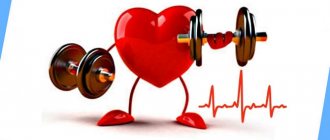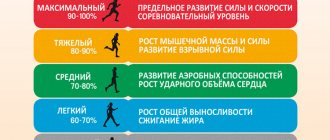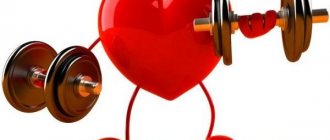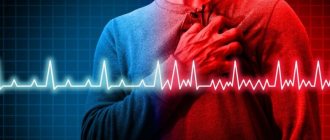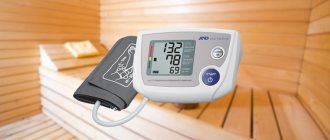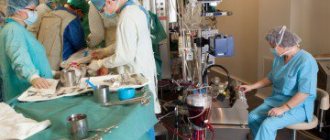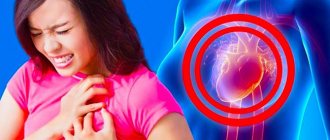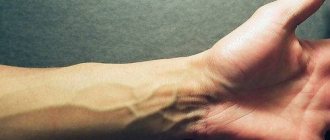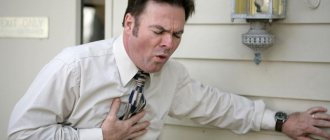Low heart rate. Why is he dangerous?
Pulse is the presence of vibrations in the walls of blood vessels, reflecting the work of the heart.
This process occurs differently at each age. In old people, a normal heart rate is 65 beats per minute. In young children, the standard rate is at least 100 beats per minute. As for newborns, they are record holders in this regard - 140 beats per minute.
The normal heart rate of an adult does not exceed 80 beats, and does not fall below 60.
The pulse can be measured by placing your fingers on your wrist or on the base of your lower jaw. The measurement takes place strictly in a horizontal position, since otherwise the indicators may fluctuate.
The exception is athletes, whose rhythm may be lower than that of a normal non-training person. This is normal and does not pose any danger. The pulse tends to change under the influence of the following factors:
- Fright
- Excitation
- Physical exercise
- Excitement
- Joy
And that's not all. When hungover, a person also experiences fluctuations in heart rate.
How dangerous are tachycardia and bradycardia?
Bradycardia is a slowing of heart rate to 60 beats per minute or less. Functional bradycardia is common in athletes. In healthy people it occurs during sleep. A slow pulse in an ordinary person may be a sign of myocardial infarction, inflammation of the heart muscle, ulcers, high intracranial pressure, or poisoning. Taking certain medications also causes a reduction in heart rate.
Tachycardia (increased heartbeat in an adult from 100 beats) can also be physiological (during sports, excitement, joy) and pathological (a sign of disturbances in the functioning of the heart). An increase in heart rate is also observed during a hypoglycemic attack.
Symptoms of tachycardia or bradycardia, if they occur frequently and for no apparent reason, cannot be ignored. They may indicate problems with the heart or other organs.
Measuring your pulse (it is carried out at the same time in the same position) will help you notice dangerous health problems in time. And in order for it to always be normal, you should give up bad habits, lead an active lifestyle, remain calm and take care of yourself.
lucky-girl.ru
How to understand that your heart rate is dropping
If the heart rate is less than 60 beats per minute, then there is every reason to worry. 55 beats per minute means that pathology begins to develop in the work of the heart muscle, which can lead to bradycardia.
Less than 50 beats indicate the presence of blood pressure, which requires urgent examination by a doctor.
It is common for your heart rate to drop during sleep. This is especially true for people whose daily routine includes training. In addition, the number of heart beats may decrease if you are in a cold room. And also, if you suddenly move from a cold room to a warm one. Or vice versa.
If your heart rate drops without significant reasons, you should immediately consult a cardiologist. Only further examination can answer the questions.
The first stage will be an electrocardiogram, which determines the heart rate and pulse itself. If they are equal, then this means one thing - the development of pathology.
Treatment
To effectively treat increased heart rate after exercise, it is first necessary to determine the cause of the disease. The way of life is changing. A clear schedule of work, rest and sleep is determined. Sleep should last at least 8 hours. If there are pathologies, physical training should begin with minimal loads (if the doctor has cleared you for exercise). Avoid bad habits and take regular walks in the fresh air. It is necessary to drink plenty of water, remain calm, and avoid nervous tension. It is recommended to pay attention to breathing exercises, which helps strengthen the heart muscle. If necessary, the doctor can prescribe heart vitamins CardioActiv and Riboxin. In case of severe pathology, special therapy with medications and surgical interventions is indicated.
During physical training, you need to monitor your well-being. If heaviness, heart pain, shortness of breath, or rapid pulse appear, you should stop exercising immediately. Restore your breathing and contact a specialist. It should be remembered that an increased heart rate is not always the norm.
How many beats per minute should be normal?
The concept of normal pulse includes the optimal number of heart beats per minute. But this parameter is not a constant, that is, constant, since it depends on the age, field of activity and even the gender of a person.
The results of measuring heart rate during a patient examination are always compared with how many beats per minute the pulse should be in a healthy person. This value is close to 60-80 beats per minute in a calm state.
But under certain conditions, deviations from this heart rate norm of up to 10 units in both directions are allowed. For example, it is believed that the heart rate in women is always 8-9 beats faster than in men.
And among professional athletes, the heart generally works in “ergonomic mode.”
This means that a heart rate of 50 beats per minute or 90 beats can be considered optimal. More serious deviations from the normal heart rate of a healthy person correlate with the person’s age.
The reference point for the normal heart rate of an adult is the same 60-80 beats per minute. Such a human pulse is the norm for a state of rest, if the adult does not suffer from cardiovascular and other diseases that affect heart rate.
In adults, the heart rate increases under unfavorable weather conditions, during physical exertion, and during an emotional outburst. To return a person’s pulse to normal for age, a 10-minute rest is enough; this is a normal physiological reaction.
If, after rest, the heart rate does not return to normal, there is reason to consult a doctor.
If a man is engaged in intense sports training, then for him at rest even 50 beats per minute is normal. In a trained person, the body adapts to the loads, the heart muscle becomes larger, due to which the volume of cardiac output increases.
Therefore, the heart does not have to make multiple contractions to ensure normal blood flow - it works slowly, but efficiently.
Men engaged in mental work may experience bradycardia (heart rate less than 60 beats per minute), but it can hardly be called physiological, since even minor stress in such men can cause the opposite condition - tachycardia (heart rate above 90 beats per minute). This negatively affects the functioning of the heart and can lead to a heart attack and other serious consequences.
The normal pulse rate for women is 70-90 beats at rest, but its indicators are influenced by many factors:
- diseases of internal organs;
- hormonal background;
- woman's age and others.
A noticeable excess of the normal heart rate is observed in women during menopause. At this time, frequent episodes of tachycardia may occur, interspersed with other arrhythmic manifestations and changes in blood pressure.
Many women often get hooked on sedatives at this age, which is not always justified and not very useful. The most correct decision when the pulse deviates from the norm at rest is to visit a doctor and select supportive therapy.
Changes in heart rate in women during pregnancy in most cases are physiological in nature and do not require the use of corrective therapy. But to make sure that the condition is physiological, you need to know what the normal heart rate is for a pregnant woman.
Not forgetting that for a woman a heart rate of 60-90 is the norm, we add that when pregnancy occurs, the heart rate begins to gradually increase. The first trimester is characterized by an increase in heart rate by an average of 10 beats, and by the third trimester – up to 15 “extra” beats.
Of course, these shocks are not superfluous; they are necessary for pumping the volume of circulating blood increased by 1.5 times into the circulatory system of the pregnant woman. How much a pregnant woman's pulse should be depends on what her heart rate was before pregnancy - it can be 75 or 115 beats per minute.
In pregnant women in the third trimester, the pulse rate is often disturbed due to lying in a horizontal position, which is why they are recommended to sleep reclining or on their side.
The highest heart rate in humans by age is in infancy. For newborns, a pulse of 140 per minute is the norm, but by the 12th month this value gradually decreases, reaching 110 - 130 beats. A rapid heartbeat in the first years of life is explained by the intensive growth and development of the child’s body, which requires increased metabolism.
A further decrease in heart rate does not occur as actively, and the rate of 100 beats per minute is reached by 6 years of age.
Only in adolescence - 16-18 years old - does the heart rate finally reach the normal adult heart rate per minute, decreasing to 65-85 beats per minute.
Arrhythmia
Arrhythmia is divided into two types: sinus and atrial fibrillation. In the first type, an uneven rhythm is observed, while the heart rate may be normal or slightly elevated. This condition is not dangerous and is not a contraindication to sports. Sinus arrhythmia does not threaten human health during exercise. With the atrial fibrillation type, the heart beats strongly during and after exercise. The pulse is so chaotic that it cannot be determined without special instruments. Pathology in most cases occurs against the background of intoxication of the body (for example, due to nicotine, alcohol, medications), as well as atherosclerosis and ischemia. During training, an attack of atrial fibrillation may occur, which causes oxygen starvation of the organs. In this case, the person experiences symptoms such as:
- dizziness;
- confusion;
- fainting conditions;
- panic attack;
- dyspnea;
- respiratory dysfunction;
- discomfort in the heart area.
Atrial fibrillation is dangerous. If the attack is not stopped in a timely manner and the patient is not hospitalized, a heart attack or stroke may occur.
What heart rate is considered normal?
Heart rate is affected not only by diseases, but also by temporary external influences. As a rule, a temporary increase in heart rate can be restored after a short rest and elimination of provoking factors. What should be the normal heart rate for a person in various conditions?
At rest
The value that is considered the normal heart rate for an adult is actually the resting heart rate.
That is, when talking about the norm of a healthy heartbeat, we always mean the value measured at rest. For an adult, this norm is 60-80 beats per minute, but under certain conditions the norm can be 50 beats (in trained people) and 90 (in women and young people).
To calculate what a person’s normal heart rate is during moderate physical activity, experts offer the following mathematical operations:
- The maximum heart rate is calculated as the difference between the number 220 and the number of complete years of a person. (For example, for 20-year-olds this value will be: 220-20=200).
- Minimum heart rate value (50% of maximum): 200:100x50 = 100 beats.
- Normal heart rate under moderate loads (70% of maximum): 200:100x70 = 140 beats per minute.
Physical activity can have different intensities - moderate and high, depending on which the heart rate of the person receiving these activities will be different.
During high physical activity, an example of which is running (as well as speed swimming, aerobics, etc.), the heart rate is calculated according to a similar scheme. To find out what a person’s heart rate is considered normal while running, use the following formulas:
- Find out the difference between the number 220 and a person’s age, that is, maximum heart rate: 220-30 = 190 (for 30-year-olds).
- Determine 70% of the maximum: 190:100x70 = 133.
- Determine 85% of the maximum: 190:100x85 = 162 beats.
The formula for calculating maximum heart rate is also useful when calculating the heart rate rate for burning fat.
Most fitness trainers use for calculations the method of the Finnish physiologist and military doctor M. Karvonen, who developed a method for determining heart rate limits for physical training. According to this method, the target zone or FBL (fat burning zone) is a heart rate ranging from 50 to 80% of your maximum heart rate.
When calculating the maximum heart rate, the norm by age is not taken into account, but age itself is taken into account. For example, let’s take the age of 40 years and calculate the heart rate rate for life-saving lifestyle:
- 220 – 40 = 180.
- 180x0.5 = 90 (50% of the maximum).
- 180x0.8 = 144 (80% of the maximum).
- The heart rate ranges from 90 to 144 beats per minute.
Why is there such a discrepancy in numbers? The fact is that the normal heart rate for training should be selected individually, taking into account fitness, well-being and other characteristics of the body. Therefore, before starting training (and during it), a medical examination is necessary.
After meal
Gastrocardiac syndrome - a noticeable increase in heart rate after eating - can be observed in various diseases of the gastrointestinal tract, cardiovascular, and endocrine systems. A pathological condition is indicated by a heartbeat that is significantly higher than normal. Is there really a norm for heart rate to increase while eating?
Strictly speaking, a slight increase in heart rate during or 10-15 minutes after a meal is a physiological condition. Food entering the stomach puts pressure on the diaphragm, which forces a person to breathe deeper and more often - hence the increase in heart rate. Exceeding the normal heart rate occurs especially often when overeating.
But even if little food is eaten, and the heart still starts beating faster, this is not always a sign of pathology. Simply, digesting food requires an increase in metabolism, and for this a slight increase in heart rate is required.
We have already learned how to calculate it, all that remains is to compare your own pulse after eating with the norm calculated using the formula.
Maximum heart rate during physical activity at age: table
It is more convenient to track the permissible maximum heart rate during physical activity at different ages using the table:
| Age, years | Optimal values in the range of 50-85% of the maximum | Maximum heart rate |
| 20 | 100-170 | 200 |
| 30 | 95-162 | 190 |
| 35 | 93-157 | 185 |
| 40 | 90-153 | 180 |
| 45 | 88-149 | 175 |
| 50 | 85-145 | 170 |
| 55 | 83-140 | 165 |
| 60 | 80-136 | 160 |
| 65 | 78-132 | 155 |
| 70 | 75-128 | 150 |
These values were calculated regardless of gender and level of training, that is, they are very average.
Increased heart rate
To compare your own measurements with the optimum, it is useful to have on hand a table of heart rate norms by age. It shows the minimum and maximum permissible heart rate values. If your heartbeat is less than the minimum normal value, bradycardia can be suspected; if it is more than the maximum, tachycardia is possible. But only a doctor can determine this.
Table. Normal human heart rate by age.
| Age category | Minimum normal value (beats per minute) | Maximum normal value (beats per minute) | Average (beats per minute) |
| First month of life | 110 | 170 | 140 |
| First year of life | 100 | 160 | 130 |
| Up to 2 years | 95 | 155 | 125 |
| 2-6 | 85 | 125 | 105 |
| 6-8 | 75 | 120 | 97 |
| 8-10 | 70 | 110 | 90 |
| 10-12 | 60 | 100 | 80 |
| 12-15 | 60 | 95 | 75 |
| Before 18 | 60 | 93 | 75 |
| 18-40 | 60 | 90 | 75 |
| 40-60 | 60 | 90-100 (higher in women) | 75-80 |
| over 60 | 60 | 90 | 70 |
The data are given for people without any particular pathologies and measurements taken in a state of complete rest, that is, immediately after waking up or after a 10-minute rest while lying down. Women over 45 should pay attention to a slightly elevated heart rate, which is associated with hormonal changes during menopause.
Rhythmic vibrations of the walls of blood vessels, provoked by contractions of the heart muscle, are usually called the pulse.
It can accelerate or slow down depending on the presence of physiological and external influence factors. Increased heart rate is usually caused by the following reasons:
- strong emotional disturbance;
- physical fatigue;
- significant stress on the body;
- consumption of alcoholic beverages and coffee.
There are also other factors against which the pulse may be accelerated. These include: time of day, increased body and air temperature, food intake.
A person's age and gender play a role. It has been proven that women have a slightly higher pulse rate than men, by about 7–8 beats.
The indicators can be influenced by the functional state of the body, various diseases and organic lesions. The speed of pulse fluctuations even depends on height - the taller a person is, the slower his heart contractions occur.
It has been noted that a slowdown in people’s heart rate is observed at night, and a natural acceleration is typical for the second half of the day. The peculiarity of this criterion of heart function is that the same pulse indicators indicate different conditions.
For example, for a newborn, a heartbeat of 140 beats per minute is considered normal, but for an adult this is a too rapid pulse, indicating a disturbance in the functioning of the heart. It is also worth noting that the pulse rate in older people is higher than in young and middle-aged people.
Exercising helps to quickly get your body in order and strengthen all your organs. However, during training, you need to take into account the maximum heart rate in order to eliminate the risk of complications due to overload.
The maximum heart rate is the number of contractions the heart can make in 1 minute. Moreover, these indicators should not provoke stress or be fatal to the body.
In a normal state, the frequency of contractions of the heart muscle in a well-developed person should be 60-70 beats, however, certain deviations also occur that will not cause harm to health.
The limit of normal heart rate cannot be more than 100 beats. Exactly what the limiting frequency is depends entirely on certain factors and the individual characteristics of each person.
Why does bradycardia occur and when should it be treated?
Have you been struggling with HYPERTENSION for many years without success?
Head of the Institute: “You will be amazed at how easy it is to cure hypertension by taking it every day.
Bradycardia, what is it? Why does the heart begin to beat frighteningly slowly, and sometimes not very smoothly? Such questions are asked by those who have experienced sensations of a slowing pulse, accompanied by severe weakness and fear.
But is a slow heart rate always dangerous? When does it need urgent treatment, and when is it considered normal?
Our readers successfully use ReCardio to treat hypertension. Seeing how popular this product is, we decided to bring it to your attention. Read more here...
What is bradycardia and why is it dangerous?
Heart contractions are considered to be slow if their frequency becomes:
- less than 60 per minute in adults;
- less often 60-70 per minute in children from 1 to 6 years old;
- less than 100 per minute in infants.
Rare contractions of the heart lead to blood circulation slowing down, tissues and organs receiving less oxygen and nutrients, and metabolism slowing down. Against the background of starvation of vital systems and organs, a person feels:
- weakness;
- cold sweat;
- severe fatigue even after usual work;
- dizziness;
- darkening of the eyes;
- blurred vision due to flashing flies;
- loss of consciousness (the duration of fainting depends on the severity of the disease).
But why is bradycardia dangerous? And the fact that if it is not treated in a timely manner, then insufficient blood supply and the resulting symptoms can provoke the following complications:
- ischemic myocardial damage, accompanied by attacks of angina of varying intensity;
- the occurrence of chronic circulatory failure;
- VSD, often of the hypotonic type, but the development of hypertension is also possible;
- Morgagni-Adams-Stokes attacks, when sudden fainting is accompanied by convulsions caused by cerebral hypoxia (it differs from an epileptic seizure in that it occurs suddenly, there are no precursors characteristic of epilepsy);
- sudden cardiac arrest.
In children with bradycardia, symptoms are more severe than in adults and pose a greater health hazard. This is due to the fact that in the child’s body the processes of adaptation to unfavorable factors are not sufficiently developed and the distribution of intake for nutrition of vital organs is not always complete. Severe bradycardia in children often provokes the development of convulsive seizures, during which cardiac arrest and death are possible.
Why does pulse pathology occur?
Bradycardia of the heart can be:
Pathological pulse failure
The development of pathology is possible for several reasons:
- Organic. Impaired myocardial conductivity (the heart muscle ceases to fully conduct the contractile impulse to areas of the heart). It may occur due to weakness of the sinus node (the pacemaker that sets the frequency of contractions), various blockades, or myocardial necrosis that occurs during ischemia.
- Toxic. Infectious diseases accompanied by severe intoxication of the body (meningitis, hepatitis, typhoid fever) provoke the appearance of organophosphorus compounds in the blood. These blood substances have a depressing effect on the contractile function of the heart. Sometimes this can occur due to excess potassium or sodium ions in the blood. This group also includes poisoning with gases and certain substances.
- Hormonal. Suppression of thyroid function (hypothyroidism) and some diseases of the adrenal glands provoke changes in hormonal levels. Lack of hormones often provokes a slowdown in rhythm.
- Medicinal. Taking certain medications (veropamil, nifedipine, reserpine) has a depressing effect on the functioning of the sinus node.
- Household. Alcohol and smoking cause chronic intoxication, inhibiting the activity of the heart rhythm driver.
- Starvation. This most often happens in women trying to lose weight quickly. Most diets exclude from the diet foods that contain substances important for metabolic processes, which leads to changes in the blood formula and general cellular starvation. After a diet, women feel severe weakness, fatigue and note that their heart has become less frequent.
- Extracardiac, extracardiac. They arise due to an indirect effect on the contractile function of the myocardium. These include: irritation of the carotid sinus (located at the bottom of the neck on the right and left) by wearing tight collars, with peptic ulcers of the stomach and intestines or with increased intracranial pressure.
- Ideopathic. When the causes of bradycardia cannot be identified, but there is a periodic or constant lack of pulse, a diagnosis of idiopathic bradycardia is made.
- Pregnancy. Changes in the body associated with pregnancy can cause disruptions in the functioning of systems and organs. This condition is dangerous for the pregnant woman and for the child she is carrying. Bradycardic symptoms in pregnancy require immediate evaluation and treatment.
But despite the differences in causes, they all cause life-threatening organ dysfunction. The most dangerous is a decrease accompanied by arrhythmia (the pulse becomes uneven, a long pause occurs between 2 pulse waves). Bradyarrhythmia is most often observed against the background of organic disorders and severe intoxication.
Physiological reduction in heart rate
Rare heartbeats do not always indicate the development of pathology; in some cases they occur for physiological reasons. The types of physiological bradycardia include:
- Sports. The pulse of an athlete or a person constantly engaged in heavy physical labor, even while awake, can be 35-40 beats per minute. This occurs because the heart muscle, trained by exercise, effortlessly disperses blood throughout the organs and tissues, providing them with adequate nutrition. During physical activity, an athlete’s pulse is 60-80 beats (an ordinary person experiences physiological tachycardia at this time), and at rest it decreases.
- Respiratory. As you exhale, the heartbeat slows down, and as you inhale, it returns to normal. This change in heart rate is due to the fact that the pressure inside the chest fluctuates when breathing. It is easy to identify this reason: at the time of taking the ECG, it is enough to ask to hold your breath for a short time. Holding your breath will even out your pulse.
- Peace. In children and adults under the age of 40, a temporary atrioventricular block may appear during sleep, slowing the pulse to 30-40 beats. This condition is a normal variant, and treatment for bradycardia is not required.
- Senile. In old age and senility, there is a gradual decline in all body functions and a decrease in the activity of metabolic processes. If there are no serious diseases and the condition does not cause a person severe discomfort, then a decrease in heart rate in the elderly is considered normal.
With a physiological decrease in the frequency of myocardial contractions, there is no discomfort, the person’s well-being does not suffer. Therapeutic measures for physiological bradycardia are not required.
Diagnostics
Severe bradycardia, when a rare pulse persists for a long time, is easily diagnosed. An ECG is enough. But moderate bradycardia, in which a low heart rate alternates with a normal one, is more difficult to diagnose and often the reason for examination by a cardiologist will be a complaint of chronic fatigue. To identify pathology, the following is prescribed:
- ECG. Even if at the time of examination there is no slowdown in rhythm, then the film will show signs of weakness of the sinus node or the presence of blockades will be detected, suggesting a tendency to bradycardia.
- ECG monitoring. Taking an ECG at a certain time during the day. The examination is carried out in the following way: electrodes are attached to the patient’s body, and the person returns to his usual lifestyle. These examinations make it possible to determine the severity of bradycardic phenomena in connection with the degree of human activity.
- Echocardiography. Examines the state of the myocardium and allows you to detect changes in tissue structure (necrosis, ischemia).
- Biochemistry of blood. The biochemical composition of venous blood makes it possible to determine the ratio of its main components (potassium, sodium), as well as to identify pathological compounds that arise during poisoning or infectious-toxic processes.
These examinations help not only to identify the probable cause, but also to determine the severity of the process:
- light (50-60 per minute, no treatment required);
- moderately expressed (40-50 per minute, adjusted by diet and lifestyle changes);
- severe (less than 40 per minute, requires serious treatment).
Treatment of bradycardia is carried out on the basis of data obtained during examinations.
Basics of treating the disease
How to treat bradycardia? Can it be cured at home? And is it always necessary to treat this disease?
Treatment of bradycardia almost always takes place in a hospital; this disease can be cured at home only if it is caused by fasting for the purpose of losing weight. If the diet has not been very long, and only mild or moderate bradycardia is diagnosed, then the violations can be corrected with proper nutrition.
In all other cases, examination and treatment in a hospital setting are required. Children, regardless of the causes of the pathology, are treated only under the supervision of a pediatric cardiologist.
Depending on what caused the decrease in heart rate, the following is carried out:
- elimination of the provoking factor (giving up bad habits, treating infectious processes), very often this is enough to eliminate the symptoms that have arisen;
- establishing a proper work and rest regime;
- selection of adequate physical activity appropriate to age and general health;
- creating a menu for nutritious meals;
- prescription of medications.
In severe cases (usually with weakness of the sinus node or with complete blockades, when the conduction of the cardiac impulse is completely blocked), bradycardia is treated by implanting a pacemaker. The indication for implantation of a rhythm stimulator is a decrease in heart rate below 40 per minute, if there is a pause between contractions and pauses of more than 2 seconds or in the presence of frequently occurring bradyarrhythmia.
If there are no dysfunctions of the organs, and the person’s general condition does not suffer, then drug treatment is not required. Such people are given recommendations regarding their daily routine and proper nutrition, leaving them registered with a cardiologist at a risk group for the development of pathology.
First aid to a patient
How to help a person at home when he suddenly turns pale and his heart almost stops beating?
It is impossible to provide full assistance at home; you need to call an ambulance. Before the ambulance arrives, you can alleviate the patient’s condition using the following actions:
- put the victim on his back and raise his legs with a pillow or bolster (the higher the leg end is raised, the greater the blood flow to the heart and brain);
- if the person is conscious, put an aminophylline tablet under his tongue;
- measure your blood pressure and in case of hypotension it is permissible to give a tablet of prednisolone or isadrin.
Next, you need to wait for the ambulance to arrive and monitor the patient’s pulse and breathing. If the pulse and breathing have disappeared, then before the medical team arrives, it is recommended to begin independent resuscitation: alternating 15 presses on the heart area with 2 blows of air into the patient’s mouth.
Bradycardia is a serious symptom and can provoke life-threatening conditions, including cardiac arrest and death, so it is dangerous to ignore it. Only in rare cases, a decrease in the pulse resulting from the physiological characteristics of the body, after a medical examination, can simply be left under medical supervision without prescribing treatment.
What does it reflect?
The increased heart rate in women is explained by the excessive emotionality of the weaker sex, as well as the constant work of hormones in the female body, however, the difference in the number of beats is no more than eight.
The clinical picture is completely different in pregnant women - a woman’s body literally works for two, and this cannot be reflected in the pulse. The needs of the fetus inside the mother increase every day - the need for oxygen and nutrition increases, and all these shortages are replenished from the personal resources of the female body, which, of course, cannot but lead to visible changes.
A fairly economical pulse should not cause alarm in people who are consistently, even if not at a professional level, involved in active sports, who follow proper nutrition and who are not subject to bad habits.
For this kind of people with an active lifestyle, HR reflects their attitude towards their own energy consumption; they are extremely scrupulous in terms of regulating vital processes to an optimal level.
For any other person who does not have such a good foundation on a physical level, a stable heart rate below 60 beats per minute should already cause some concern.
But, even more than in simply trained people, the pulse is slowed down in athletes who work at the limit of human capabilities; they are also said about such people: “to break the heart.” For them, 40 – 50 beats/min.
, constitute the absolute norm at rest. However, this extreme has a very significant drawback, like any extreme in general - after all, the cardiovascular system also has its own limit, overstepping which is dangerous.
And constantly keeping the work of the heart muscle on the verge of breakdown is not only unreasonable, but also very dangerous. Quite often, deaths in the field of professional sports are recorded precisely because the heart cannot withstand the given load.
Normal heart rate by age
In order to accurately characterize the permissible norms and possible deviations of pulse fluctuations for people of different ages, we will use the table.
| Person's age | Minimum permissible heart rate value | Maximum permissible heart rate value | Average heart rate |
| Newborn period (from 0 to 1 month) | 110 | 170 | 140 |
| From 1 to 12 months. | 102 | 162 | 132 |
| From 1 to 2 years | 94 | 154 | 124 |
| From 4 to 6 years | 86 | 126 | 106 |
| From 6 to 8 years | 78 | 118 | 98 |
| From 8 to 10 years | 68 | 108 | 88 |
| From 10 to 12 years | 60 | 100 | 80 |
| From 12 to 15 years | 55 | 95 | 75 |
| From 15 to 50 years | 60 | 80 | 70 |
| From 50 to 60 years | 64 | 84 | 74 |
| From 60 to 80 years | 69 | 89 | 79 |
Using this table, you can correctly evaluate the results of measuring pulse fluctuations. But, in addition to the fact that everyone should know the normal pulse value for their age, one should understand what a slow or accelerated heartbeat indicates.
If the pulse rate exceeds the maximum permissible value, this should be a reason to seek medical help.
Increased heart rate may be due to functional factors. For example, a pulse of up to 90 beats per minute or higher is observed in women with the onset of menopause and indicates an attack of tachycardia.
A decrease in the level of the hormone estrogen in the blood, caused by other reasons, also leads to an increase in heart rate.
How to distinguish functional changes in pulse from pathological ones? In the first case, people do not have complaints about symptoms such as:
- dizziness;
- chest pain;
- visual impairment;
- dyspnea;
- pre-fainting state.
If the listed signs are present, then the increase in pulse fluctuations is associated with pathological reasons.
Diseases that can provoke tachycardia (increased heart rate):
- congenital heart defects, organ pathologies;
- diseases of the endocrine system;
- CNS lesions;
- tumor formations;
- some infectious diseases.
Regardless of what causes the increased heart rate, you need to seek medical help in cases where the maximum heart rate for age is exceeded.
The maximum permissible value without a table can be calculated using the formula: subtract the number of full years of a person from 220.
Both an increase and a decrease in the rate of contraction of the heart muscle can be of a functional or pathological nature. A slow heart rate to 60 beats per minute or less is a symptom of bradycardia
.
Diseases in which a slow pulse is observed:
- myocardial infarction;
- intoxication of the body;
- increased intracranial pressure;
- hypothyroidism;
- organic heart lesions;
- ulcerative pathology;
- inflammation of the heart muscle tissue.
Bradycardia can also be a consequence of taking certain types of medications.
It is important to regularly measure and monitor pulse fluctuations, and if deviations from the norm are detected, contact a cardiologist!
serdceinfo.ru
Critical indicators
In an adult, the heart rate ranges from 60 to 80 beats per minute. For preschool children, this parameter increases to 100. If there are 50 beats per minute, doctors note a critical, pathologically low pulse rate. This proves disturbances in the functioning of the heart and blood vessels.
What symptoms may indicate high blood pressure with a low heart rate? If the heart rate is slightly reduced, the patient feels only the negative effects of high blood pressure. A person experiences severe headaches, tinnitus, a feeling of heat, shortness of breath, nausea, and the skin turns red. The patient does not even realize that high blood pressure and low pulse can be observed simultaneously. You can confirm your assumptions only with the help of an electronic tonometer, which simultaneously with measuring pressure determines a person’s pulse. If the rhythm drops to 50 beats per minute, the patient may lose consciousness.

